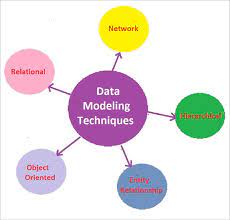System architecture refers to the overall structure and organization of a software system, including its components, interactions, and deployment. Three commonly used architectures in system analysis and design are client-server, web-based, and cloud-based architectures. Let’s explore each of these architectures in more detail:
- Client-Server Architecture:
In a client-server architecture, the system is divided into two main components: the client and the server. The client, typically a user interface or application running on a user’s device, sends requests to the server for data or services. The server, which is responsible for processing these requests, stores and manages data and performs the necessary computations. The client and server communicate over a network, such as the internet or a local area network (LAN).
Client-server architectures allow for a distributed and scalable system design. Clients can be lightweight, focusing on user interaction, while the server handles the heavy processing and data management. This architecture is commonly used in systems where multiple clients need to access shared resources or when centralized control and data management are required.
- Web-based Architecture:
Web-based architectures are built on the client-server model but specifically designed for web applications. In a web-based architecture, the client is typically a web browser that sends requests to a server over the internet using the Hypertext Transfer Protocol (HTTP). The server processes the requests, generates dynamic web pages or delivers static content, and sends the response back to the client.
Web-based architectures enable universal access to applications through standard web browsers, making them platform-independent. They allow for a flexible and scalable deployment model, as clients can access the system from any device with an internet connection. Web-based architectures are commonly used for websites, web applications, and web services.
- Cloud-based Architecture:
Cloud-based architectures leverage cloud computing infrastructure to provide scalable and on-demand resources for system deployment. In a cloud-based architecture, the system components are hosted and managed on cloud servers, which can be public, private, or hybrid cloud environments. Clients access the system and its services over the internet.
Cloud-based architectures offer advantages such as scalability, flexibility, and cost efficiency. They eliminate the need for organizations to maintain their own physical infrastructure and allow for easy scaling based on demand. Cloud-based architectures are commonly used for a wide range of systems, including software as a service (SaaS) applications, data storage and processing, and distributed computing.
When designing a system, the choice of architecture depends on factors such as system requirements, scalability needs, security considerations, and available resources. Each architecture has its own strengths and considerations, and it’s essential to analyze and evaluate the specific requirements and constraints of the project before selecting the most suitable architecture.
